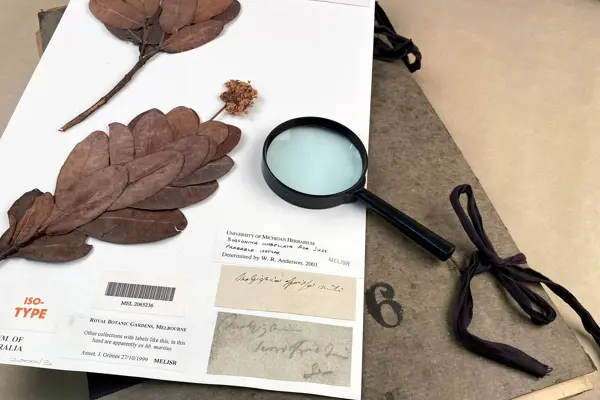
Explore the collection
Jump to:
The National Herbarium of Victoria includes representatives of most of Australia's vascular flora as well as algae, bryophyte, fungi and lichen collections of international significance. This immense library of botanical information documents nature’s diversity, underpins conservation and ecological research, and helps us understand how different species respond to environmental changes.
Our collection continues to grow through the collecting efforts of herbarium staff; exchange of specimens with other herbaria; and by donations of specimens from students and researchers.
Lichens
Lichens are a mutually beneficial association between fungi and photosynthetic algae. This biological partnership makes them some of the hardiest organisms in nature – they can survive in environmental extremes from hot deserts to Antarctic tundra, from exposed mountain tops to dark forest gullies.
The National Herbarium of Victoria holds extensive lichen collections from all over Australia, including significant collections from sub-Antarctic islands. Among the non-Australian lichen specimens are several thousand from Europe, North America and Antarctica, with smaller numbers from other continents.
Explore our lichen collections below.
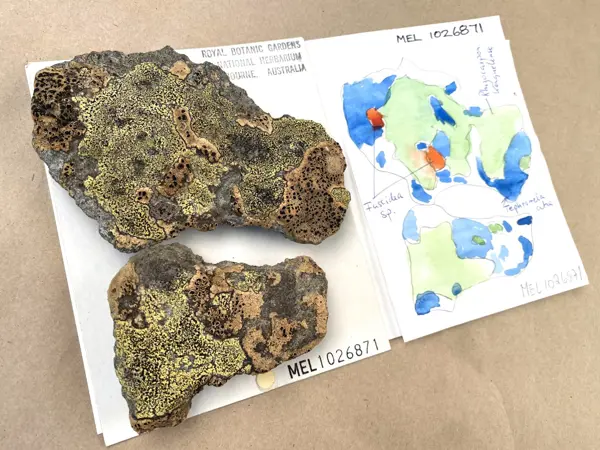
Lichens have three main growth forms: crustose, foliose and fruticose. Crustose lichens, as the name suggests, grow as tightly held crusts on various surfaces. Crustose lichens can have intricate patterns like the patchy green of this ‘map’ lichen, Rhizocarpon kerguelense, which is growing alongside two other species.

Fungi
From single-celled organisms to elegant mushrooms to enormous fleshy brackets, fungi are a remarkably diverse kingdom of organisms. They play a vital role in supporting life on Earth: they recycle nutrients from plant and animal matter to sustain new life; their sporing bodies provide food for many animals; and their underground networks of web-like mycelium make it easier for plants to access nutrients and seeds to germinate.
Having traditionally been studied alongside plants, fungi are often housed in herbaria. The National Herbarium of Victoria houses a vast collection of fungi specimens collected across Australia and around the globe, from the 19th century to the present day.
Explore our fungi collections in more detail below.
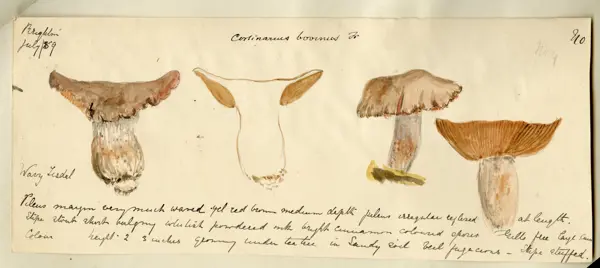
This watercolour was painted by Flora Martin (1845–1923), a pioneering Australian fungi collector and researcher. Paintings like this one are more than just pretty pictures – they play an important role in scientific documentation by showing us how the sporing body looked when it was fresh.

Bryophytes
The term bryophyte refers to three main taxonomic groups: mosses, hornworts and liverworts. They are some of the oldest land plants on earth – having been around for more than 400 million years – and grow in diverse habitats ranging from lush rainforests to arid deserts.
Our bryophyte collection covers a broad geographical range and is particularly rich in Australian material. Significant Australian collections include those made by early bryologists Richard Bastow and William Watts, and more recent material collected by Ilma Stone, Jim Willis, Niels Klazenga and Pina Milne.
Take a closer look at some of the amazing bryophytes in our collection.
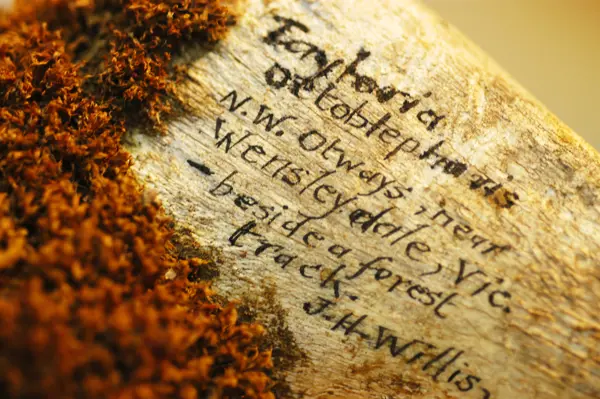
The spores of Tayloria octoblepharum are dispersed by flies, which explains its preference for growing on animal dung. But it also grows on other surfaces, like this animal bone from the Otway Ranges. As well as playing host to the moss, the bone provided a convenient place for Jim Willis (1910–1995) to record his collecting notes.

Algae
Algae are a diverse group of photosynthetic organisms and among the earliest plants on Earth. They are found in both freshwater and saltwater habitats, and can exist as unicellular forms like phytoplankton through to large multicellular forms such as seaweed and giant kelp.
The extensive holdings at the National Herbarium of Victoria include a collection of approximately 46,000 algae specimens from all continents and oceans, which form an invaluable resource for phycologists – scientists who study algae. About two-thirds of the specimens were collected in Australia.
Explore the below gallery to view highlights from the algae collection.
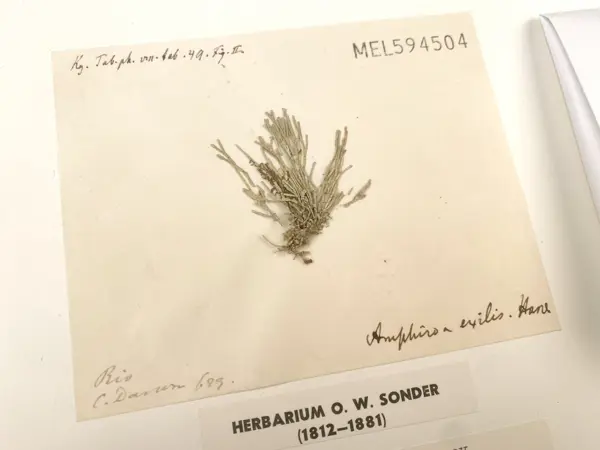
With large parts of our global algae collection remaining untouched for decades, curation staff are sometimes in for a surprise. This specimen – the type of the red alga Amphiroa exilis – was collected by Charles Darwin (1809–1882) on the voyage of the Beagle (1831–1836) in Rio de Janeiro. It’s one of only three specimens collected by Darwin that we know of in the Herbarium.

